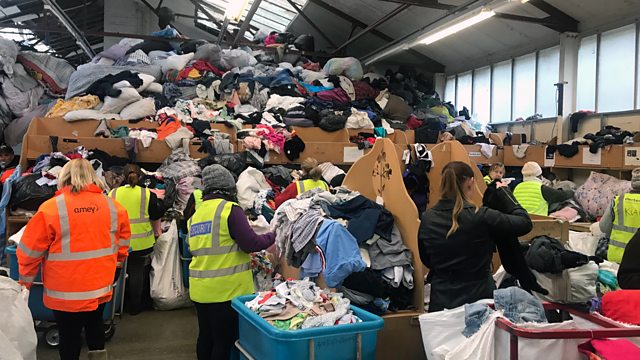Turning old clothes into new ones
Hundreds of thousands of tonnes of clothes are thrown out each year and are often left to rot. But chemicals are being used to recycle fabric and make new clothes from old ones.
Itβs estimated that 400 billion square metres of fabric are made every year β enough to cover Germany β for the fashion industry. The sector produces a similar amount of greenhouse gases to the international airline and shipping industries combined.
The two most-used materials are cotton and polyester. Growing cotton requires a vast amount of land and water, and often chemicals too. Polyester is a by-product of the oil industry which has a massive environmental impact.
But after clothing has been used, just 1% of it is recycled in a way that means it can be turned into other clothes. Much of whatβs left ends up in landfill or is burned.
What if that were to change and new clothes could easily be made out of old ones?
Companies across the world are trying to βclose the loopβ in the fashion industry, developing chemical processes to turn used fabric back into materials that can be used again.
Swedenβs Re:newcell is transforming old cotton into useable material, while the UKβs Worn Again has come up with a process to enable the re-use of blended textiles.
But are these processes viable? Will turning old pants into new shirts save the planet β or is the solution something much deeper?
Presenter: Nick Holland
Producer: Jamie Ryan
(Photo Caption: Clothes at a textile sorting depot / Photo Credit: ΒιΆΉΤΌΕΔ)
People fixing the world on YouTube
Watch stories of people changing their world on the World Service English YouTube channel
Podcast
-
![]()
People Fixing the World
Brilliant solutions to the worldβs problems


